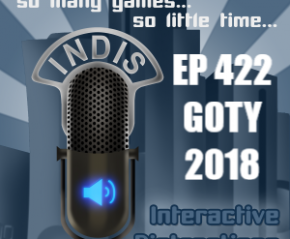Portal 2
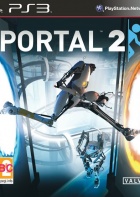

| Game Name: | Portal 2 |
| Platforms: | PS3 / 360 / PC |
| Publisher(s): | Electronic Arts |
| Developer(s): | Valve Software |
| Genre(s): | First Person Puzzle |
| Release Date: | 04/19/2011 |
| ESRB Rating: | Everyone 10+ |
| Big Ups: | Great story telling, great characters, incredible level design |
| Big Downs: | l o a d i n g . . . . |
If you stop and think about it, I’ll bet you can count on one hand the amount of video games with a number after the title that are any good. I’ll even go as far as to wager there are even less that you would consider to be better than the original game. Recently, Valve has made an attempt to enter into this coveted unofficial hall of fame with Portal 2. If you’re anything like me, you have fond memories of a smart mouthed, disembodied, computerized, robot voice with a set of morals the KKK would frown upon pushing you through multiple, puzzle-filled chambers that can melt your brain (sometimes literally) while attempting to solve them. Has Valve managed to live up to the challenge with Portal 2? In a word, no; they’ve not only lived up to it, they’ve completely bitch-slapped it.
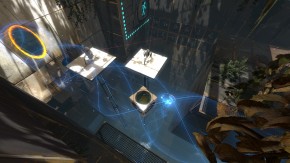 The basics of Portal 2 are quite similar to the first. You move through a series of chambers with a designated entrance and exit that do not have a straight forward path connecting the two. You are given a familiar friend, the Portal Gun, that shoots portals on certain materials which you can travel through. You must navigate through various hazards, including sludge-like acid, turrets, and my favorite, the mashy spike plates. With this tool alone you can come up with a million ways to kill yourself before finding the proper portal placement to solve the puzzle. To add to the mayhem, Valve has gone and added a few more arrows to the quiver: there’s the nice addition of the Aerial Faith Plates, which slingshot you around a room like a “portal wielding eagle, which may or may not be piloting a blimp”; various colored gels that make you bounce higher than normal, accelerate at super human speeds, capable of shooting portals onto any surface; a light funnel that can be used to push or pull yourself around a chamber; and a light bridge that works as a generic hard surface to walk on or even block the gunfire of turrets (but don’t worry, they don’t blame you).
The basics of Portal 2 are quite similar to the first. You move through a series of chambers with a designated entrance and exit that do not have a straight forward path connecting the two. You are given a familiar friend, the Portal Gun, that shoots portals on certain materials which you can travel through. You must navigate through various hazards, including sludge-like acid, turrets, and my favorite, the mashy spike plates. With this tool alone you can come up with a million ways to kill yourself before finding the proper portal placement to solve the puzzle. To add to the mayhem, Valve has gone and added a few more arrows to the quiver: there’s the nice addition of the Aerial Faith Plates, which slingshot you around a room like a “portal wielding eagle, which may or may not be piloting a blimp”; various colored gels that make you bounce higher than normal, accelerate at super human speeds, capable of shooting portals onto any surface; a light funnel that can be used to push or pull yourself around a chamber; and a light bridge that works as a generic hard surface to walk on or even block the gunfire of turrets (but don’t worry, they don’t blame you).
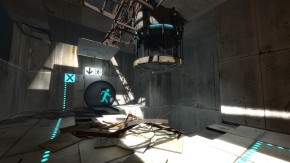 As you enter the old testing facility, you quickly realize it has been a long time since anyone has swept up around the place. Plant life is growing; wild and walls are crumbled to pieces. You make your way through these dilapidated chambers as they are slowly brought back from the dead, which is really cool to watch. You even get a peek at what Aperture Science looked like decades prior. The game completely immerses you with detail of sounds orchestrated by the design team. In the earlier chambers, you can hear crickets in the background as you navigate the overgrown plants and platforms. As your piloting through the air via aerial faith plates, the music becomes more industrial and high energy, which can really get the blood pumping when you’re hitting as many as 4 of the plates in one shot. You get similar effects anytime you use the blue and orange gels.
As you enter the old testing facility, you quickly realize it has been a long time since anyone has swept up around the place. Plant life is growing; wild and walls are crumbled to pieces. You make your way through these dilapidated chambers as they are slowly brought back from the dead, which is really cool to watch. You even get a peek at what Aperture Science looked like decades prior. The game completely immerses you with detail of sounds orchestrated by the design team. In the earlier chambers, you can hear crickets in the background as you navigate the overgrown plants and platforms. As your piloting through the air via aerial faith plates, the music becomes more industrial and high energy, which can really get the blood pumping when you’re hitting as many as 4 of the plates in one shot. You get similar effects anytime you use the blue and orange gels.
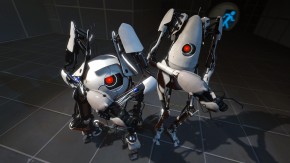 As if there weren’t enough in the single-player version of the game, Portal 2 comes fully equipped with a co-op version for your playing pleasure. Far from a tacked on addition to the game, the co-op mode is an amazing testament to the level of dedication the designers at Valve poured into its already overflowing cup of level design. There is a plethora of cranium crippling puzzles that you must work together to solve. Most puzzle require the coordinated use of four portals at any given time. You would think this would be frustrating, but with the ability to view your co-op partners screen via a picture-in-picture window and the ability to use the ping tool to mark portal targets, it actually works pretty smoothly. There is also voice chat of course. This is where the experiment gets doubly interesting, as Valve has given PS3 players the ability to play co-op with players on the Steam network which is PC-based. This works incredibly well and was the method my wife and I used for the majority of our co-op play.
As if there weren’t enough in the single-player version of the game, Portal 2 comes fully equipped with a co-op version for your playing pleasure. Far from a tacked on addition to the game, the co-op mode is an amazing testament to the level of dedication the designers at Valve poured into its already overflowing cup of level design. There is a plethora of cranium crippling puzzles that you must work together to solve. Most puzzle require the coordinated use of four portals at any given time. You would think this would be frustrating, but with the ability to view your co-op partners screen via a picture-in-picture window and the ability to use the ping tool to mark portal targets, it actually works pretty smoothly. There is also voice chat of course. This is where the experiment gets doubly interesting, as Valve has given PS3 players the ability to play co-op with players on the Steam network which is PC-based. This works incredibly well and was the method my wife and I used for the majority of our co-op play.
Up to this point in the review, you might have heard exactly what you supposed you would hear. I expected puzzles, and I expected quirky robots, but what I didn’t expected was to care about said robots. Not unlike Pixar breathing life into a legless and voiceless garbage crusher, Valve have managed to make you care about the fate of a pile of silicon and metal as well.
From the moment you start the game, you are inundated with smart ass lines from a little friendly robot named Wheatley. He helps you get out of your initial predicament, and throws you straight into a worse one. While he initially seems to have helped you out, he then accidently organizes a meeting between you and freshly resurrected GlaDOS. You quickly realize that, no matter how well intended his actions are, Wheatley is a complete moron. He may be an entertaining moron, but a moron none the less.
 Speaking of GlaDOS, you may have thought she was a soulless passive-aggressive witch in the first game, but you’d be wrong. GlaDOS 2.0 delivers the best one liners to date. You will feel bad about yourself, and you will fall out of your chair laughing. This just scratches the surface of the characters you meet, which include the old CEO of Aperture Science, Cave Johnson! It’s impressive the level at which these characters are developed.
Speaking of GlaDOS, you may have thought she was a soulless passive-aggressive witch in the first game, but you’d be wrong. GlaDOS 2.0 delivers the best one liners to date. You will feel bad about yourself, and you will fall out of your chair laughing. This just scratches the surface of the characters you meet, which include the old CEO of Aperture Science, Cave Johnson! It’s impressive the level at which these characters are developed.
The game has no real faults, save the loading screens. The characters, problem solving and even the landscapes are incredible. It is with my deepest regret that I must rate this game a Terrible Distraction, as our rating scale, unlike the amps of Spinal Tap, does not have an 11.
